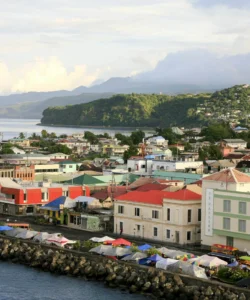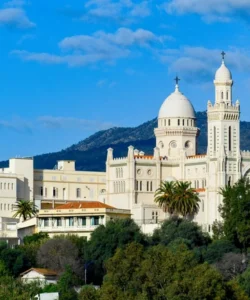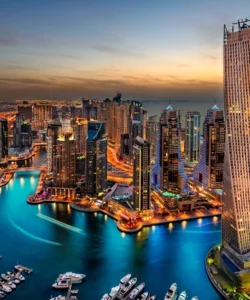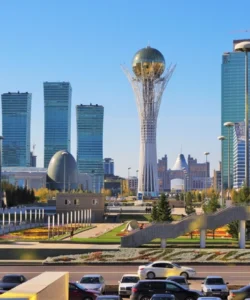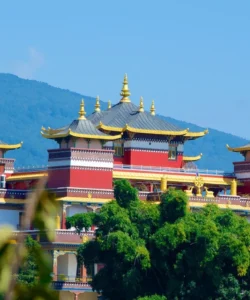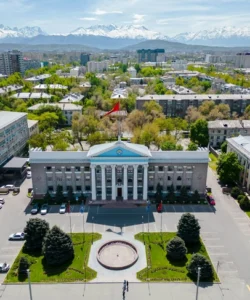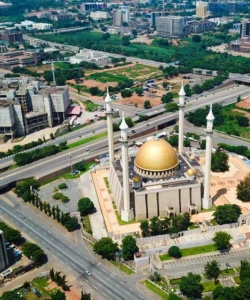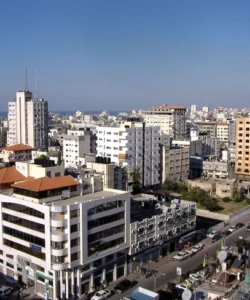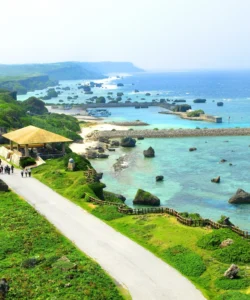Barbados is an independent island nation in the Lesser Antilles, located in the eastern Caribbean. It is renowned for its beautiful white and pink-sand beaches, crystal-clear turquoise waters, vibrant cultural heritage, and a long history tied to sugar production. It blends British traditions with a distinct Caribbean flair, often referred to as “Little England.”
Listen to an introduction about Barbados
![]()
Area and Population:
Barbados has a total land area of approximately 432 sq. km (167 sq. mi). As of 2024, the estimated population is around 282,000 people.
Language:
The official language is English. Bajan Creole, an English-based Creole dialect with West African influences, is widely spoken by locals.
Currency:
The official currency is the Barbadian Dollar (BBD), which is fixed to the US Dollar at BBD $2.00 to US $1.00. The United States Dollar (USD) is widely accepted across the island.
Religion:
The predominant religion is Christianity, with various Protestant denominations (Anglican, Pentecostal, Methodist, Moravian, Wesleyan, Seventh-Day Adventist, Baptist) being the most common. Roman Catholicism is also present.
Capital:
The capital city of Barbados is Bridgetown. It is the largest city and a UNESCO World Heritage site, serving as the main commercial and cultural hub.
Major Cities/Towns:
Besides Bridgetown, other notable towns and areas include Speightstown (historic town in the north), Oistins (known for its fish fry), Holetown (the first British settlement), and St. Lawrence Gap (a lively area with restaurants and nightlife).
Attractions:
Barbados offers a diverse range of attractions, combining historical sites, natural beauty, and vibrant cultural experiences:
- Harrison’s Cave Eco-Adventure Park: A magnificent crystallized limestone cave system with streams, waterfalls, and deep pools, explored via an electric tram.
- Historic Bridgetown and its Garrison: A UNESCO World Heritage site, this area showcases well-preserved British colonial architecture, including public buildings, St. Michael’s Cathedral, and the barracks of the British military garrison.
- Crane Beach: Often lauded as one of the world’s most beautiful beaches, known for its dramatic pink-tinged sand, turquoise waters, and unique cliff setting.
- St. Nicholas Abbey: A beautifully preserved 17th-century plantation house, rum distillery, and museum, offering insights into Barbados’s sugar and rum history.
- Animal Flower Cave: Located at the northern tip of the island, this sea cave features natural rock pools and openings to the ocean, often with “animal flowers” (sea anemones).
- Bottom Bay: A picturesque, secluded beach on the southeast coast, framed by tall palm trees and coral cliffs, offering stunning views (swimming can be rough).
- Andromeda Botanic Gardens: A tranquil and diverse botanical garden showcasing a wide variety of tropical plants.
- Oistins Fish Fry: A lively Friday and Saturday night event in the fishing village of Oistins, where locals and tourists gather for fresh grilled or fried fish, local food, music, and dancing.
- Mount Gay Rum Distillery: The world’s oldest commercial rum distillery (dating back to 1703), offering tours and tastings of Barbados’s famous rum.
- Parliament Buildings: Located in Bridgetown, these Gothic-style buildings are significant historical landmarks.
- Barbados Wildlife Reserve: Home to various animals, including green monkeys, peacocks, and tortoises, roaming freely in a natural habitat.
Natural Wonders:
Barbados’s natural beauty comes from its unique geological formation and coastal features:
- Limestone Island: Unlike many volcanic Caribbean islands, Barbados is a coral and limestone island, resulting in its distinct white-sand beaches, cave systems (like Harrison’s Cave), and a relatively flatter terrain in parts.
- Coastal Cliffs and Coves: Especially along the dramatic east and north coasts.
- Coral Reefs: Surrounding the island, offering excellent snorkeling and diving opportunities with diverse marine life.
Architecture:
Barbadian architecture reflects a strong British colonial influence adapted to the tropical climate, alongside some older plantation styles.
- Georgian and Neo-Gothic (Bridgetown): Prominent in the capital, seen in public buildings like the Parliament Buildings and St. Michael’s Cathedral.
- Plantation Great Houses: Many historic sugar plantation houses (like St. Nicholas Abbey and Sunbury Plantation House) showcase distinctive architecture with grand facades, wide verandas, and sturdy construction.
- Chattel Houses: Unique to Barbados, these are small, movable wooden homes, traditionally built by plantation workers, often brightly painted and featuring intricate fretwork.
- Resort Architecture: Modern hotels and villas often blend contemporary designs with Caribbean elements, emphasizing open-air living and ocean views.
Roads:
Barbados has a well-developed and extensive road network compared to many other Caribbean islands. Major roads are generally in good condition, but smaller, rural roads can be narrower and winding. Driving is on the left-hand side of the road. Traffic can be heavy in and around Bridgetown. Public transportation is reliable, primarily consisting of public buses (blue and yellow) and private vans (ZRs), which are a common and inexpensive way to get around. Taxis are also widely available.
Hotels:
Barbados offers a wide range of accommodations, from ultra-luxury resorts and boutique hotels to all-inclusive resorts, charming guesthouses, and self-catering villas.
- Sandy Lane: An iconic ultra-luxury resort known for its impeccable service, golf courses, and exclusivity.
- Fairmont Royal Pavilion: An elegant beachfront resort on the west coast.
- Colony Club by Elegant Hotels: A beautiful luxury resort with lush gardens.
- The Crane Resort: Famous for its stunning location overlooking Crane Beach.
- Bougainvillea Barbados: A popular resort with a range of amenities.
- Waves Hotel & Spa by Elegant Hotels (All-Inclusive): An all-inclusive wellness-focused resort.
- Hilton Barbados Resort: A large resort near Bridgetown.
Restaurants:
Barbados has a vibrant and sophisticated culinary scene, offering a mix of Bajan specialties and international cuisine, often with stunning ocean views.
- The Cliff (St. James): One of the Caribbean’s most iconic fine-dining restaurants, known for its spectacular cliffside setting, ambiance, and exquisite cuisine.
- Cuz’s Fish Stand (near Pebbles Beach): A legendary local spot famous for its simple, yet incredibly delicious, fish cutters (sandwiches). A must-try for authentic Bajan street food.
- Oistins Fish Fry (Oistins): (Mentioned above as an attraction) A fantastic place to experience local food, especially grilled fresh fish.
- Tapas (Bridgetown): A popular waterfront restaurant in Bridgetown, offering small plates and a lively atmosphere.
- Champers (Christ Church): A well-regarded restaurant with an oceanfront setting, serving delicious seafood and international dishes.
- Local Rum Shops: Abundant across the island, offering casual places to drink and often grab a quick, authentic local meal.
Cuisine:
Barbadian cuisine, often called Bajan cuisine, is a delicious fusion of African, British, Indian, and Creole influences, characterized by its use of fresh seafood, local produce, and flavorful spices.
- Cou-Cou and Fried Flying Fish: Considered the national dish. Cou-cou is a cornmeal and okra mixture similar to polenta, served with fried flying fish, which is abundant in Barbadian waters.
- Macaroni Pie: A staple side dish, a baked macaroni and cheese casserole that is a beloved comfort food.
- Fish Cakes: Fried patties made from salted codfish and herbs, a popular snack or appetizer.
- Pudding and Souse: A traditional Saturday dish, consisting of pickled pork (souse) and a steamed pudding made from sweet potato and spices.
- Conkies: A sweet dish made from cornmeal, coconut, pumpkin, spices, and dried fruit, wrapped in a banana leaf and steamed.
- Roti: A popular flatbread, often filled with curried chicken, beef, or vegetables, reflecting the island’s Indian influence.
- Bajan Pepper Sauce: A fiery hot sauce made from scotch bonnet peppers, a staple condiment.
- Sweet Potato Pudding: A rich and sweet baked dessert.
- Fresh Seafood: Mahi-mahi, snapper, tuna, and lobster are commonly grilled, fried, or stewed.
- Rum: Barbados is the birthplace of rum, and it plays a significant role in the island’s culinary and social life, with numerous local rum brands.
- Mauby: A traditional Barbadian drink made from the bark of the mauby tree, with a distinctive bitter-sweet flavor.








































